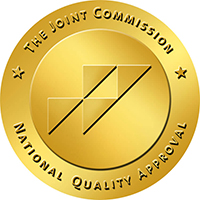The serious personal and interpersonal effects of excessive pornography that can help the reader comprehend its serious consequences and identify if any of these have been occurring in their life.
What are the effects of porn addiction?
As with any other form of addiction, there are serious risks associated with porn addiction. When a person acts appropriately, alcohol, drugs and behavioral processes may be managed on their own. However, once a person passes over a particular threshold, the negative consequences and impacts become apparent. This is also applicable to porn addiction.
Personal effects of Problematic Online Pornography Use (POPU) can be summed up in three key points:
- Erectile dysfunction: While some studies have shown no evidence of a link between pornography usage and sexual dysfunction, others believe that the growth in pornography consumption is a major reason in the dramatic increase in erectile dysfunction among young people.
According to one study, 60% of patients who had sexual dysfunction with a genuine partner did not have the same issue with pornography. Some believe that causality between pornography usage and sexual dysfunction is difficult to demonstrate since real controls who have not been exposed to pornography are difficult to come by and have proposed a research design to address this.
- Psychosexual dissatisfaction: Pornography usage has been linked to sexual dissatisfaction and dysfunction in both men and women as well as being more critical of one's or their partner's physique, higher performance pressure and less actual sex, having more sexual partners and participating in paid sex behavior.
This effect is particularly noticeable in one-sided interactions and it is comparable to marijuana usage in that it shares important characteristics such as increased secrecy. These studies are based on non-pathological pornography usage on a regular basis. However, internet pornography may not be harmful by itself - only when it becomes an addiction.
- Comorbidities: Excessive consumption of pornography has been related to mental health issues such as anxiety and depression as well as sexual dysfunction. Those who are addicted to pornography had worse levels of social integration, more conduct issues, more delinquent behavior, more depressive symptoms and a lower emotional connection with caregivers.
Pornography is a type of fantasy expression that has been related to changes in structure and function as well as the rewiring of pleasure areas in the brain.
How can porn addiction affect relationships?
Pornography is not a new problem in relationships. Nevertheless, the internet's growth appears to have boosted pornography watching and aggravated pre-existing tendencies. The simplicity, affordability and anonymity of internet pornography are all factors in this rise.
Both the user and their intimate partner may suffer harmful repercussions as a result of pornography. Addiction, loneliness, increased aggressiveness, skewed ideas and perceptions about relationships and sexuality, poor thoughts about themselves and ignoring other aspects of their lives are some of the frequent negative impacts of pornography for users. These negative effects frequently spill over into other parts of their lives, particularly their family and marital connections. Pornography can have detrimental consequences in personal relationships in the following ways:
- Without pornography, the user has a hard time becoming sexually aroused.
- The user loses interest and has fewer sexual encounters with their partner.
- Pornography usage may be perceived as adultery and betrayal by a partner.
- The usage of pornography makes the partner feel sexually insecure.
- A partner may consider certain sexual acts desired by the user unpleasant.
- Both the user and the partner report a decline in sexual satisfaction and emotional intimacy in their relationship.
- Relationship trust is damaged as a result of dishonesty and deception over the usage of pornography.
- One or both partners could be worried about their children being exposed to pornographic content.
Research also suggests that the sooner males start using porn, the more difficult it is for them to have meaningful, personal relationships with actual women. Some of these males would rather watch porn than have sex with a real person. Addiction blurs the barrier between the fictional and the actual world. Women are expected to provide pornographic sex to addicts. It enrages them when they do not receive it.
It has been studied that among heterosexual male participants in couples, the use of pornography was associated with less sexual satisfaction while the opposite was true for the female participants — pornography was associated with greater sexual satisfaction. A lot less effort is required to access pornography compared to interacting with a partner.
For others, this can lead to an unhealthy cycle in which pornography causes relationship problems, leading to the individual relying even more heavily on pornography to attain sexual fulfillment and escape the relationship troubles.
According to a study by Mulac, Jansma and Linz, couples using pornography experience divorce or separation more often than couples who are stimulated by other elements and do not use pornography for personal pleasure. Pornographic use in ongoing relationships had a detrimental impact on partnerships with a link to infidelity which was triggered by a lack of commitment in the relationship.
These harmful consequences of pornography addiction can be prevented if the indications of the disease are recognized early. If you or someone you know has been exhibiting some of the symptoms, it is critical to get professional assistance before things worsen.
References:
1. de Alarcón, R., de la Iglesia, J. I., Casado, N. M., & Montejo, A. L. (2019). Online Porn Addiction: What We Know and What We Don't-A Systematic Review. Journal of clinical medicine, 8(1), 91. https://doi.org/10.3390/jcm8010091
2. George, M., Maheshwari, S., Chandran, S., & Rao, T. S. S. (2019). Psychosocial Aspects of Pornography. Journal of Psychosexual Health, 1(1), 44–47. https://doi.org/10.1177/2631831818821535
3. G Anne Vanderlaan, Ellie Cinamon Jullian. The Effects of Pornography on Adult Males’ Relationships. Open Access J Addict & Psychol. 2(1): 2019. OAJAP.MS.ID.000530
4. Mulac A, Jansma LL, Linz DG (2002) Men’s Behavior toward Women after viewing sexually-explicit films: Degradation Makes a Difference. Communication Monographs 69(4): 311–328.
5. Maltz, W., & Maltz, L. (2006) The pornography trap. New York: Harper Collins.
6. Bridges, A., Bergner, R., & Hesson-McInnis, M. (2003). Romantic partners’ use of pornography: Its significance for women. Journal of Sex & Marital Therapy, 29(1), 1- 14.
7. Landau, J., Garrett, J., & Webb, R. (2008) Assisting a concerned person to motivate someone experiencing cybersex into treatment. Journal of Marital & Family Therapy. 34(4), 498-511.
8. Manning, J.C. (2006). The impact of internet pornography on marriage and the family: A review of the research. Sexual Addiction & Compulsivity, 13,131-165.
9. Schneider, J. (2000a). Effects of cybersex addiction on the family: Results of a survey. Sexual Addiction & Compulsivity, 7, 31-57.
10. Schneider, J. (2003) The impact of compulsive cybersex behaviours on the family. Sexual and Relationship Therapy, 18, 329-354.







